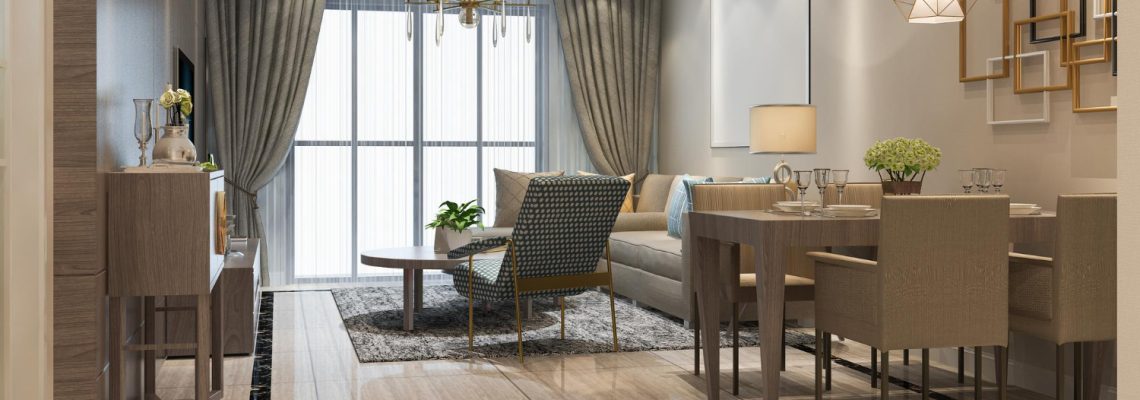Are you passionate about creating stunning living spaces that reflect the unique style and personality of your clients?
Do you have an eye for design and a knack for turning ordinary spaces into extraordinary ones?
If so, starting an interior design business in Australia could be your calling!
As the demand for beautiful and functional interiors continues to grow, there has never been a better time to launch your own interior design business. With a little creativity, hard work, and a solid sales and marketing strategy, you can turn your passion into a profitable business.
Many services to offer!
Whether you are interested in designing residential or commercial spaces, your interior design business can offer a range of services including:
- space planning
- color selection
- furniture selection
- lighting design, and more.
By creating custom design solutions that meet the unique needs and preferences of your clients, you can help them achieve the beautiful and functional spaces they desire.
How to succeed as an Interior Designer
To succeed in the competitive world of interior design, you will need to create a strong brand identity, build a network of clients and industry contacts, and develop effective sales and marketing strategies. By leveraging social media, networking events, and targeted advertising campaigns, you can reach your ideal clients and grow your business.
So, if you’re ready to unleash your creativity and start a rewarding career in interior design, now is the time to take the first step. With the right skills, passion, and determination, you can build a successful interior design business in Australia and help your clients bring their dream spaces to life!
Main reasons to start an Interior design business
Are you considering starting an interior design business but need some convincing? Look no further! There are plenty of reasons to pursue your dream of becoming an interior designer and starting your own business. Here are some key benefits:
Pursue your passion for creativity and design
Starting an interior design business allows you to do what you love every day. You’ll have the opportunity to explore new design trends and techniques, experiment with different styles, and bring your clients’ visions to life. Pursuing your passion in a career can lead to increased job satisfaction and fulfillment.
Provide personalized solutions to clients that fit their unique needs and style
As an interior designer, you’ll work closely with clients to understand their needs, style, and preferences. This allows you to provide personalized solutions that reflect their unique personality and lifestyle. You’ll have the chance to showcase your creativity and offer design solutions that are tailored to each individual client.
Work on a wide range of projects, from residential to commercial spaces
Interior design is a diverse field that offers a wide range of opportunities. You can work on projects that range from designing a single room in a residential home to creating an entire commercial space. This diversity allows you to challenge yourself and keep your work interesting and exciting.
Enjoy a flexible schedule and the ability to work from home or a studio
One of the biggest benefits of starting an interior design business is the flexibility it provides. You can choose to work from home, a studio, or a combination of both. This allows you to have more control over your work-life balance and create a schedule that works for you.
Be your own boss and have control over your business decisions
Starting your own business means that you are the boss. You’ll have control over every aspect of your business, from the projects you take on to the hours you work. This can be empowering and allow you to create a business that aligns with your values and vision.
Potential for high income and profitability as you grow your client base and reputation
As you establish a strong reputation and build a loyal client base, you have the potential to generate a high income and profitability. Interior design is a service that people are willing to pay a premium for, and by offering high-quality service and building a strong brand, you can increase your earning potential.
Collaborate with other professionals in the industry, such as architects, contractors, and furniture manufacturers
Interior design involves collaboration with other professionals in the industry. You’ll work with architects, contractors, furniture manufacturers, and other designers to bring your clients’ vision to life. This collaboration allows you to learn from others in the industry and can lead to new business opportunities.
Continuously learn and stay up-to-date with the latest design trends and techniques
Interior design is an ever-evolving field, and staying up-to-date with the latest design trends and techniques is essential. By continuously learning and expanding your skill set, you can offer your clients the most innovative and high-quality design solutions.
Make a positive impact on people’s lives by improving the functionality and aesthetics of their living or working spaces
As an interior designer, you have the opportunity to make a positive impact on people’s lives. By improving the functionality and aesthetics of their living or working spaces, you can enhance their quality of life and well-being. This can be incredibly rewarding and fulfilling.
Contribute to sustainable and environmentally-friendly design practices
Sustainable and environmentally-friendly design practices are becoming increasingly important in the industry. By incorporating these practices into your design solutions, you can contribute to a more sustainable future and attract clients who value eco-friendly design.
How to start an Interior design business
If you’re considering starting an interior design business, you may be wondering how to get started? Here are some of the main reasons to consider to get your business off the ground.
Conduct market research
Conducting market research is a critical step in starting an interior design business in Australia. It helps you gain a better understanding of the industry, your potential customers, and your competition. Here are some key things to consider when conducting market research
Identify your target audience
Who are your ideal customers? What are their needs, preferences, and pain points when it comes to interior design? Understanding your target audience can help you tailor your services to their specific needs and develop marketing strategies that resonate with them.
Analyze the competition
Who are your competitors in the market? What services do they offer? How do they differentiate themselves from other interior design businesses? Analyzing your competition can help you identify gaps in the market and develop unique selling propositions that set your business apart.
Determine pricing strategies
How much do other interior design businesses charge for their services? How much are customers willing to pay for interior design services? Determining pricing strategies can help you set competitive prices that are in line with market standards and profitable for your business.
By conducting thorough market research, you can gain valuable insights that inform your business strategy and help you make informed decisions. This can ultimately lead to a more successful and sustainable interior design business.
Develop a business plan
Developing a comprehensive business plan is essential for starting an interior design business in Australia. It provides a roadmap for your business and helps you identify key strategies and financial projections. Here are some key elements to include in your business plan:
Executive summary
A brief overview of your business plan, including your business goals, mission statement, and strategies.
Market analysis
A detailed analysis of the interior design industry in Australia, including market trends, customer needs, and competition.
Services offered
A detailed description of the services you will offer, including full-service design, consultations, and project management.
Target market
A description of your target audience, including demographic information, needs, and preferences.
Marketing strategies
A detailed plan for marketing your business, including advertising, social media, and networking strategies.
Financial projections
A detailed breakdown of your expected revenue, expenses, and profits over the first few years of your business.
Management and staffing
A description of the management structure of your business, including any key employees or contractors you plan to hire.
Implementation plan
A detailed plan for implementing your business strategies and achieving your business goals.
By developing a comprehensive business plan, you can ensure that your interior design business is well-prepared for success. It helps you identify potential challenges, set realistic goals, and create a roadmap for growth and profitability.
Additionally, a business plan can be used to secure financing, attract investors, and measure your progress over time.
Register your business
Registering your interior design business with the Australian Securities and Investments Commission (ASIC) is a critical step in starting a legal and legitimate business in Australia. Here’s a more detailed look at the steps involved in registering your business:
Choose your business structure
Before you register your business, you need to decide on your business structure. This can be a sole proprietorship, partnership, company, or trust.
Register for an Australian Business Number (ABN)
An ABN is a unique 11-digit number that identifies your business to the government and the community. You can register for an ABN online through the Australian Business Register.
Register for Goods and Services Tax (GST)
If your business has an annual turnover of $75,000 or more, you must register for GST. This tax is a 10% charge on most goods and services sold in Australia.
Apply for necessary licenses and permits
Depending on the nature of your business, you may need to apply for additional licenses or permits. For example, if you plan to work with hazardous materials, you may need a special license from the government.
Register your business name
If you plan to use a business name other than your own name, you must register it with the ASIC.
By completing these steps, you can legally register your interior design business in Australia and ensure that you are compliant with all necessary regulations and requirements. It’s important to consult with a professional or use online resources to ensure that you understand all of the necessary steps involved in registering your business.
Build your team
Building a team is an important step in establishing and growing your interior design business in Australia. Here are some things to consider as you build your team:
Determine your staffing needs
Start by assessing your business needs and identifying the specific roles and responsibilities required to operate your business effectively. Depending on the size of your business and the scope of your services, you may need to hire employees or contractors to help with marketing, design, administrative tasks, and project management.
Hire qualified professionals
When hiring employees or contractors, look for individuals with experience, skills, and qualifications that match your business needs. This may include graphic designers, architects, project managers, and other design professionals. Ensure that they are licensed and qualified to work in their respective fields.
Develop effective communication and collaboration strategies
Effective communication is critical to the success of your interior design business. Develop communication and collaboration strategies that allow your team to work together seamlessly and effectively. This may include project management tools, regular team meetings, and clear communication channels.
Establish partnerships with other professionals
Building partnerships with other professionals in the industry, such as architects, contractors, and furniture manufacturers, can help expand your business opportunities and enhance the services you offer to your clients. Collaborating with these professionals can also help you stay up-to-date with the latest industry trends and best practices.
By building a strong team and collaborating with other professionals in the industry, you can establish a reputable and successful interior design business in Australia. It’s important to invest time and resources in hiring qualified professionals and developing effective communication and collaboration strategies that support the growth and success of your business.
Set up your workspace
Setting up your workspace is an important step in starting your interior design business in Australia. Here are some things to consider as you set up your workspace:
Choose a workspace that suits your business needs
Determine whether a home office or a dedicated studio is the best option for your business. A home office can be a cost-effective solution, but a dedicated studio may provide a more professional atmosphere and greater space to meet with clients.
Invest in necessary equipment and supplies
You will need certain equipment and supplies to operate your interior design business effectively. This may include:
- computers
- design software
- office furniture, and
- office supplies.
Ensure that your workspace is equipped with the necessary tools to meet your business needs.
Create a comfortable and functional workspace
A comfortable and functional workspace can enhance your productivity and creativity.
Consider factors such as lighting, temperature, and layout to create a workspace that is conducive to your work.
Consider branding and marketing
Your workspace can also serve as a marketing tool for your interior design business. Consider incorporating your brand and design aesthetic into your workspace design to showcase your capabilities to potential clients.
By setting up a workspace that suits your business needs and investing in the necessary equipment and supplies, you can create an environment that supports your productivity and creativity. A comfortable and functional workspace can also help enhance your branding and marketing efforts, positioning your business for success in the competitive interior design industry in Australia.
Develop your brand
Developing your brand is a crucial step in starting your interior design business in Australia. Here are some tips to help you create a brand that reflects your design style and values:
Determine your design style
Your design style should be reflected in your brand. Consider what design aesthetic you specialize in and what sets you apart from other interior designers in the market. This will help you establish a unique brand identity.
Create a brand identity
Your brand identity should be consistent across all platforms, including your logo, website, and social media profiles. Choose a color scheme, typography, and graphics that reflect your design style and values. This will help you create a cohesive brand that resonates with your target audience.
Build a website
Your website is often the first impression potential clients will have of your business. Create a website that showcases your portfolio, services, and contact information. Ensure that your website is easy to navigate, visually appealing, and optimized for search engines.
Establish a social media presence
Social media is a powerful tool for marketing your interior design business. Create social media profiles on platforms such as Instagram, Facebook, and Pinterest, and post regularly to showcase your work and engage with your followers.
Utilize online marketing strategies: Online marketing strategies such as search engine optimization (SEO), pay-per-click advertising (PPC), and email marketing can help increase your visibility and reach potential clients. Consider working with a digital marketing agency or consultant to help you develop and implement an effective online marketing strategy.
By developing a brand that reflects your design style and values and utilizing online marketing strategies to increase your visibility, you can establish a strong online presence and position your interior design business for success in the competitive Australian market.
Offer a range of services
To ensure the success of your interior design business in Australia, it’s important to offer a range of services that cater to the needs of different clients. Here are some key interior design services that you may consider offering:
Full-service design
Full-service design involves managing every aspect of a project from conception to completion. This may include designing floor plans, selecting finishes and furnishings, and managing construction and installation. This service is ideal for clients who want a completely customized and tailored interior design solution.
Consultations
Offer consultations for clients who need design advice and guidance but don’t require a full-service design package. Consultations may be charged on an hourly basis and may include advice on color schemes, furniture selection, and layout.
Project management
Offer project management services to oversee the construction and installation of a design project. This may include managing contractors, scheduling deliveries, and coordinating installations.
E-design
E-design services involve designing a space remotely using digital communication tools such as email and video conferencing. This service is ideal for clients who don’t live near your studio or who prefer a more affordable and flexible interior design solution.
By offering a range of interior design services, you can attract a wider range of clients and increase your revenue potential. Additionally, by tailoring your services to meet the unique needs and budgets of each client, you can establish a reputation for providing personalized and high-quality interior design solutions.
Create design proposals
Creating design proposals for clients is an essential step in the interior design process. It allows you to clearly define the scope of work, timeline, and pricing for the project, and helps ensure that both you and the client are on the same page.
Here are some key components to include in your design proposals:
Scope of work
Clearly outline the scope of work for the project, including the specific design services you will be providing, such as space planning, furniture selection, and color schemes. Be as specific as possible to avoid any confusion or misunderstandings.
Timeline
Include a timeline for the project that outlines key milestones and deadlines, such as design concepts, material selection, and installation dates. This helps ensure that the project stays on track and meets the client’s expectations.
Pricing
Provide a detailed breakdown of the pricing for the project, including any fees or charges associated with your services, materials, and labor. Be transparent and upfront about pricing to avoid any surprises or misunderstandings.
Contract
Include a detailed contract that outlines the responsibilities of both parties, including payment terms, cancellation policies, and confidentiality agreements. Make sure the contract is clear and legally binding.
By creating comprehensive design proposals, you can build trust with clients, establish clear expectations, and set the stage for a successful project. This not only helps ensure that the client is satisfied with the final result, but also helps protect your business from any legal disputes or misunderstandings.
Build a portfolio
Building a portfolio is a crucial step in establishing yourself as an interior designer and attracting new clients. Your portfolio should showcase your best work and demonstrate your design style, creativity, and attention to detail. Here are some key steps to building a strong portfolio:
Select your best work
Choose a selection of your best work that represents your design style and demonstrates your ability to create beautiful, functional spaces. Be sure to include a variety of projects, such as residential and commercial spaces, to showcase your versatility.
Take high-quality photographs
Hire a professional photographer or invest in a high-quality camera to take clear, well-lit photographs of your work. Be sure to capture a range of angles and details to showcase the full scope of each project.
Create a presentation
Organize your portfolio into a clear, visually appealing presentation that showcases your work and design process. Include a brief description of each project, the client’s goals, and how you achieved them.
Use digital platforms
In addition to a physical portfolio, create a digital portfolio that can be easily accessed and shared online. This can include a website, social media pages, or online portfolio platforms such as Behance or Houzz.
By building a strong portfolio, you can demonstrate your expertise in the industry and attract new clients who are looking for an interior designer with your specific skill set and design style. Be sure to update your portfolio regularly with new projects and keep it organized and easy to navigate.
Stay up-to-date with industry trends
Staying up-to-date with industry trends is crucial for interior designers who want to remain competitive and relevant in the industry. Here are some ways to continuously learn and stay up-to-date with the latest design trends and techniques:
Attend industry events
Attend industry events such as trade shows, conferences, and exhibitions to learn about the latest design trends, technologies, and products. These events provide an opportunity to network with other professionals in the industry and gain insights into emerging trends and best practices.
Take courses and training programs
Invest in ongoing education by taking courses and training programs to expand your skill set and knowledge. These may include programs in design software, project management, or sustainable design practices.
Read industry publications
Subscribe to industry publications such as design magazines and blogs to stay up-to-date on the latest trends and news in the industry. These publications often feature expert insights and case studies that can provide valuable inspiration and information.
Connect with other professionals
Build relationships with other professionals in the industry, such as architects, contractors, and furniture manufacturers, to learn about new products and technologies, and collaborate on projects.
By continuously learning and staying up-to-date with the latest design trends and techniques, interior designers can provide their clients with innovative and cutting-edge design solutions that meet their unique needs and preferences. It also allows them to differentiate themselves from competitors and maintain a competitive edge in the industry.
Starting an interior design business in Australia requires careful planning, hard work, and dedication. By following these steps, you can build a successful business that reflects your passion for design and creativity.
Finances required to start an interior design business
Starting an interior design business requires careful financial planning to ensure that you have the necessary resources to launch and sustain your business. Here are some of the expenses you can expect to incur when starting an interior design business:
- Registration and licensing fees: To start a business in Australia, you will need to register your business with the Australian Securities and Investments Commission (ASIC), which involves paying registration fees. You may also need to obtain licenses and permits to operate your business, which can also come with associated fees.
- Equipment and supplies: As an interior designer, you will need to invest in equipment and supplies such as computers, design software, office supplies, and furniture. Depending on the scope of your business, you may also need to invest in more specialized equipment such as drafting tables, fabric samples, and showroom displays.
- Workspace expenses: Whether you choose to work from a home office or a dedicated studio, you will incur expenses related to your workspace. These may include rent, utilities, internet, phone, and insurance.
- Marketing and advertising: To attract clients, you will need to invest in marketing and advertising. This can include creating a website, designing a logo, printing business cards, and advertising through social media or other channels.
- Staffing costs: If you plan to hire employees or contractors to help with marketing, design, and administrative tasks, you will need to factor in the costs of salaries, benefits, and training.
- Professional development: To stay competitive in the industry, you will need to invest in professional development opportunities such as courses, training programs, and workshops.
- Insurance: As a business owner, it’s important to protect your assets and liability with business insurance. This may include professional liability insurance, general liability insurance, and property insurance.
- Other miscellaneous expenses: There may be other expenses related to starting and running an interior design business, such as legal fees, accounting fees, and travel expenses.
To start an interior design business in Australia, you can expect to spend anywhere from a few thousand dollars to tens of thousands of dollars, depending on the scope and scale of your business. It’s important to create a detailed business plan and budget to help you manage your finances and stay on track with your expenses.
Interior Design related articles
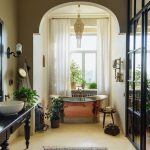
Skills Required to Start an Interior Design Business
Interior design is the art and science of enhancing the interiors of a space to achieve a more aesthetically pleasing and functional environment. It is
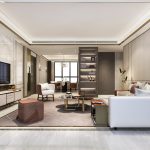
Legal Requirements of an Interior Design Business in Australia
Starting an interior design business in Australia can be an exciting and rewarding venture. However, it’s important to understand the legal requirements involved in running
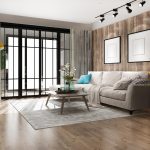
How to Market your Interior Design Business?
Marketing is a crucial aspect of any business, including interior design. If you are starting an interior design business, you need to make sure that
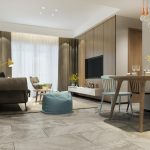
How to Hire Interior Design Employees?
Hiring interior design employees can be a challenging process, as finding the right talent with the necessary skills and experience can be difficult. However, building
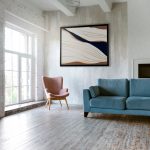
How To Become an Interior Designer Without a Degree
Becoming an interior designer without a degree may seem like a daunting task, but it is definitely possible. In fact, many successful interior design business

